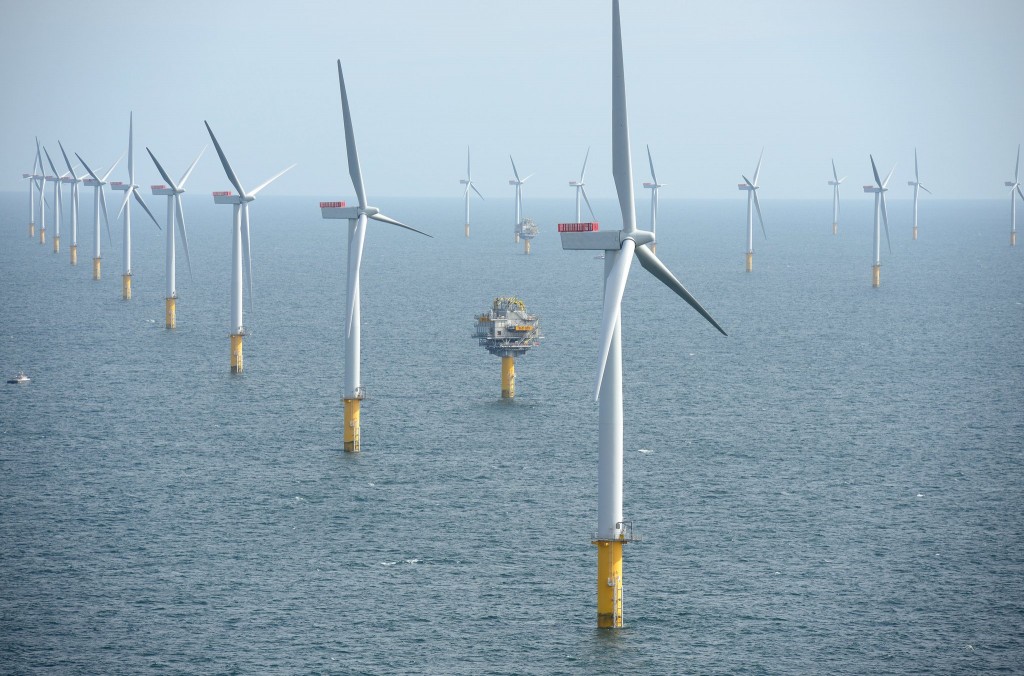As officials across the Shore area pass resolutions opposing oil drilling off the New Jersey coast, a new debate is about to get underway.
Gov. Phil Murphy on Wednesday signed an executive order directing the New Jersey Board of Public Utilities to fully implement the state’s Offshore Wind Economic Development Act and begin the process of moving the state toward a goal of 3,500 megawatts of offshore wind energy generation by the year 2030. Former Gov. Chris Christie signed the act into law but, much to the chagrin of environmentalists, never set up a funding mechanism.
While few dispute the cleanliness of wind turbines, they have caused controversy in the past over the aesthetic appearance of turbines offshore, as well as the potential loss of fishing grounds and the turbines’ effect on migratory bird populations.
For Ocean County’s northern barrier island, one of the concerns – the aesthetic appeal – is largely irrelevant, according to planning documents filed in 2015, when a plan for wind energy production off the N.J. coast was first developed.
The Bureau of Ocean Energy Management, an arm of the federal Department of Interior, has awarded two 25-year lease contracts. Permission to develop turbines in the southern area, a swath of 160,480 acres off Cape May and southern Atlantic counties, was granted for $880,715. The lease went to RES America Developments Inc. The northern portion, 183,353 acres of ocean off northern Atlantic and southern Ocean counties, was leased for $1,006,240 to US Wind Inc.
Still pending is a third lease area, which extends from the southern coast of Long Island to an area near Point Pleasant Beach and Bay Head, maps show.
According to the Argonne National Laboratory, a study showed that offshore turbines were visible at distances of 26 miles during the daytime and 24 miles at night, and may be a “major focus of visual attention” at distances of up to 10 miles.
In the southern portion of the New Jersey lease area, turbines being visible from the beachfront is a distinct possibility. The turbines, according to BOEM, will be located seven nautical miles offshore – well within sight range, according to a study of similar facilities in the United Kingdom.
The northernmost boundary of the leases previously awarded is in an area east of Surf City and the North Beach section of Long Beach Township, leaving the northern barrier island squarely in the clear.
The third offshore wind development zone, according to maps released by BOEM, will be located 11 miles south of the Long Beach, N.Y., but far removed from the view of the northern Ocean County and southern Monmouth County coastline, even though the turbines would still be located offshore. That project has drawn more criticism from commercial fishermen worried over a loss of scalloping grounds.
Murphy’s executive order directs the BPU to begin the rulemaking process to fill the gaps in the current regulations governing the offshore wind program. The order also directs BPU President Joseph Fiordaliso and New Jersey Department of Environmental Protection Commissioner Catherine McCabe to work together to establish an Offshore Wind Strategic Plan for New Jersey. The plan, the administration says, will focus on “critical components of offshore wind development, including job growth, workforce development, data collection, and appropriate determination of facilities, as well as ensuring that natural resources are protected.”
While the projects may face opposition, proponents point to the significant energy the two New Jersey lease areas have the capability of producing. If the entire area is developed, it could account for 3,400 megawatts of commercial wind generation, enough electricity to power about 1.2 million homes. For comparison purposes, the Oyster Creek Nuclear Generating Station – which is scheduled to shut down in 2019 – produces 636 megawatts of energy.
“We’ve done studies to find the best places for wind that have the least environmental impacts six years ago,” said Jeff Tittel, president of the New Jersey chapter of the Sierra Club. “Off shore wind is the most reliable and cost-effective form of offshore power and New Jersey needs to pursue policies to facilitate the construction of wind turbines off our coast.”
Under the Order, BPU will implement the offshore wind program by approving financial plans submitted by offshore wind developers. After the creation of a process to approve such plans, the BPU will issue a solicitation calling for proposed offshore wind projects for the generation of 1,100 megawatts of electric power — the nation’s largest such solicitation to date. Finally, the executive order instructs the BPU to engage with neighboring states on the potential benefits of regional collaboration on offshore wind.
“Our goal is to grow offshore wind in a way that creates jobs and reduces our dependence on fossil fuels,” Murphy said. “New Jersey is committed to growing our clean energy sector, and offshore wind is at the crux of increasing that part of our economy.”

Advertisement

Police, Fire & Courts
Cops: Juvenile Arrested After 118mph Joy Ride in Seaside Heights, Toms River Kills 2

Seaside Heights & Seaside Park
Seaside Heights OKs ‘Pedacycle’ Tours for 2025 in Revived Experiment

Police, Fire & Courts
Cops: Juvenile Arrested After 118mph Joy Ride in Seaside Heights, Toms River Kills 2

Police, Fire & Courts
Ocean County Sheriff Establishes Drone Command Center in Seaside Heights Amid New Video








